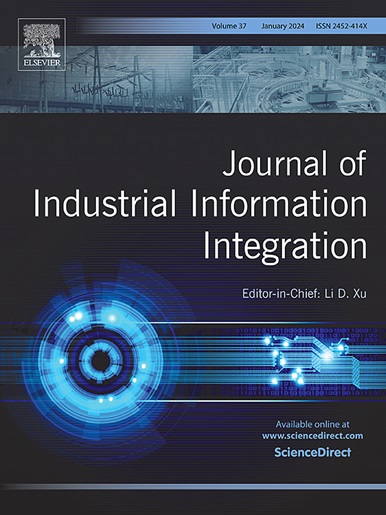Low-altitude intelligent transportation: System architecture, infrastructure, and key technologies
IF 10.4
1区 计算机科学
Q1 COMPUTER SCIENCE, INTERDISCIPLINARY APPLICATIONS
引用次数: 0
Abstract
In the context of the burgeoning low-altitude economy, low-altitude intelligent transportation (LAIT) has emerged as the focal point of research. This study comprehensively explores the current state, challenges, and future development prospects of LAIT from three key aspects: system architecture, infrastructure, and critical technologies. First, we propose a future LAIT system framework based on a cyber-physical system (CPS) layered architecture to provide a potential solution for urban air transport. Second, we introduce a framework for the entire lifecycle and management chain of the LAIT system, offering an in-depth analysis of each stage from design, construction, and operation to management, with the aim of realizing intelligent management and operation of low-altitude transportation. Finally, this study discusses the technical, security, and social challenges that future LAIT will face in the context of Industry 4.0, while envisioning the pathways of technological innovation. It summarizes the need for advanced infrastructure and breakthroughs in key technologies such as the Internet of Things (IoT), 6G, artificial intelligence (AI), and low-altitude geographic information system. This study provides a systematic framework and technical guidelines for the future development of low-altitude intelligent transportation, supporting continuous innovation, and upgrading the low-altitude economy.
低空智能交通:系统架构、基础设施和关键技术
在低空经济蓬勃发展的背景下,低空智能交通(LAIT)已成为研究的焦点。本研究从系统架构、基础设施和关键技术三个方面全面探讨了低空智能交通(LAIT)的现状、挑战和未来发展前景。首先,我们提出了基于网络物理系统(CPS)分层架构的未来 LAIT 系统框架,为城市航空运输提供了一个潜在的解决方案。其次,我们介绍了 LAIT 系统的全生命周期和管理链框架,深入分析了从设计、建设、运营到管理的各个阶段,旨在实现低空运输的智能化管理和运营。最后,本研究探讨了工业 4.0 背景下未来 LAIT 将面临的技术、安全和社会挑战,同时展望了技术创新的途径。本研究总结了先进基础设施的需求以及物联网(IoT)、6G、人工智能(AI)和低空地理信息系统等关键技术的突破。本研究为低空智能交通的未来发展提供了系统框架和技术指南,支持持续创新,提升低空经济。
本文章由计算机程序翻译,如有差异,请以英文原文为准。
求助全文
约1分钟内获得全文
求助全文
来源期刊

Journal of Industrial Information Integration
Decision Sciences-Information Systems and Management
CiteScore
22.30
自引率
13.40%
发文量
100
期刊介绍:
The Journal of Industrial Information Integration focuses on the industry's transition towards industrial integration and informatization, covering not only hardware and software but also information integration. It serves as a platform for promoting advances in industrial information integration, addressing challenges, issues, and solutions in an interdisciplinary forum for researchers, practitioners, and policy makers.
The Journal of Industrial Information Integration welcomes papers on foundational, technical, and practical aspects of industrial information integration, emphasizing the complex and cross-disciplinary topics that arise in industrial integration. Techniques from mathematical science, computer science, computer engineering, electrical and electronic engineering, manufacturing engineering, and engineering management are crucial in this context.
 求助内容:
求助内容: 应助结果提醒方式:
应助结果提醒方式:


